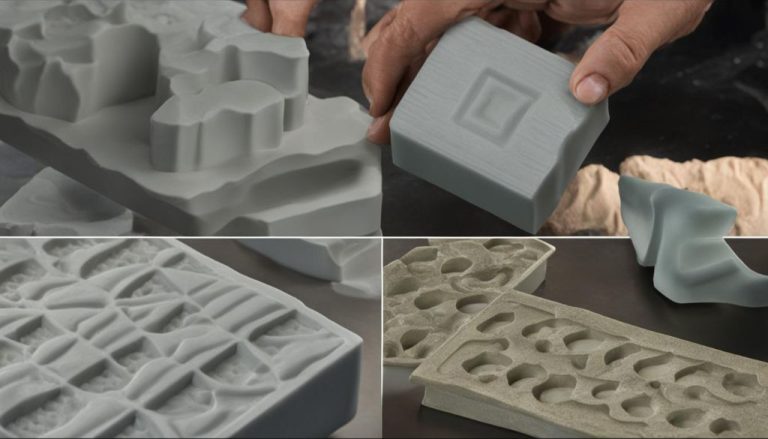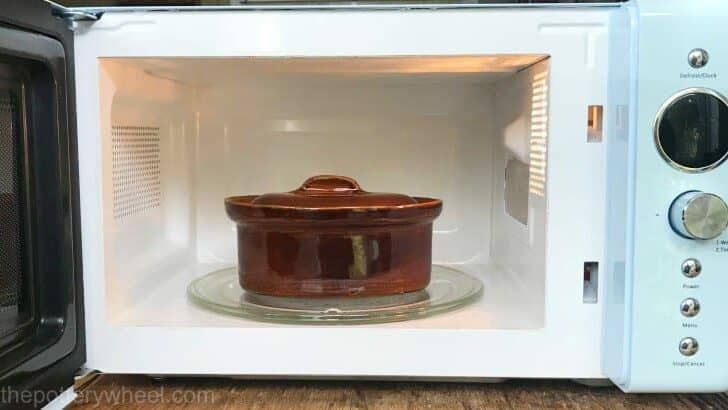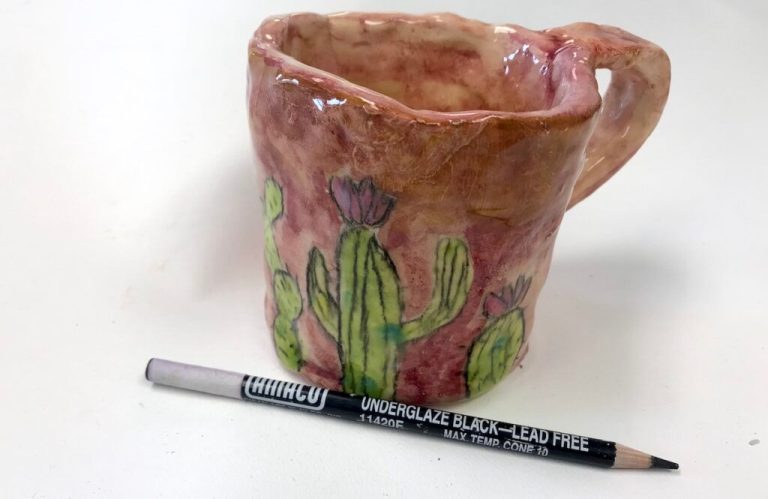Can You Burn Charcoal In A Terracotta Pot?
The question of whether you can burn charcoal in a terracotta pot is an important one to address. Cooking and grilling with charcoal is a popular method, so understanding the right materials and containers to use is key for safety and effectiveness. There are concerns around the temperature resistance of terracotta, its ventilation needs, fire containment abilities, and more when using it for burning charcoal. This article will analyze the properties of terracotta pots and the charcoal burning process to determine if this combination poses any risks or can be an effective setup. Knowing the answer can help prevent potential fires or accidents when utilizing charcoal.
Safety Concerns
When burning charcoal in a terracotta pot, a major safety concern is the risk of the pot cracking or breaking from the high heat exposure. Terracotta is made from clay that is fired at high temperatures, making it quite sturdy and heat-resistant. However, subjecting terracotta to direct fire and hot coals can still cause the material to expand and contract quickly, potentially leading to cracks or breakage.
If the structural integrity of the terracotta pot is compromised, pieces can break off and hot coals may spill out. This can lead to burning embers landing on surfaces like wood or fabric, creating a fire hazard. Additionally, if the pot cracks while in use, it can compromise the containment of the charcoal fire. This allows oxygen to reach the coals, further fueling the fire and making it more difficult to extinguish or control.
To reduce the chances of the terracotta cracking, it’s important to closely monitor the pot temperature when burning charcoal inside it. Sudden increases in heat should be avoided. It also helps to keep the coals away from direct contact with the pot sides. Slowly preheating the empty pot first, before adding hot coals, can help prevent thermal shock. Checking for hairline cracks or weaknesses in the pot before use is also advised.
Temperature Resistance
Terracotta clay can withstand very high temperatures before cracking. The maximum temperature terracotta can withstand depends on the composition of the clay and the process used to fire it during manufacturing.
Most terracotta clays can resist temperatures up to 2,500°F or 1,400°C. However, some terracotta clays with special mineral compositions and firing techniques can withstand even higher temperatures. These specialty terracotta products are sometimes used to make cookware that goes directly on stove or oven burners.
In comparison, charcoal burns at temperatures ranging from 1,100°F to 1,400°F or 600°C to 750°C. This is within the safe temperature range for regular terracotta pottery. As long as the terracotta does not contain moisture that could cause cracking from steam pressure, it should be able to withstand the heat of burning charcoal without damage.
Ventilation Needs
Proper ventilation is crucial when burning charcoal in an enclosed space like a terracotta pot. Charcoal produces carbon monoxide gas which can be deadly if inhaled. Carbon monoxide is odorless and colorless, so without adequate airflow it can quickly accumulate to dangerous levels.
Terracotta is porous which allows some ventilation. However, a terracotta container alone does not provide enough ventilation for charcoal burning. Additional ventilation holes must be added to allow fresh air flow and prevent carbon monoxide buildup.
The size and number of holes will depend on the size of the container and amount of charcoal used. As a general rule, the ventilation area should be at least 1 square inch per pound of charcoal. The holes should be spaced evenly around the bottom and sides of the container to allow air flow through the entire enclosed space.
A mesh screen can be used to cover the holes to prevent sparks and embers from escaping while still allowing proper airflow. Ventilation is a key safety consideration anytime charcoal is burned in an enclosed space.
Fire Containment
When using terracotta to contain a charcoal fire, it’s important to consider the pot’s ability to withstand and contain the fire safely. Terracotta is an earthenware clay that is fired at high temperatures, making it durable and resistant to heat. However, terracotta can crack or break under very high temperatures or rapid temperature changes.
To safely contain a charcoal fire in a terracotta pot, choose one with thick, sturdy walls that won’t easily crack from the heat. Look for high quality, well-fired terracotta labeled as fireproof or for outdoor use. Avoid very thin-walled pots or decorative pieces not meant to hold fire.
It’s also critical to allow ventilation through the bottom and/or top of the pot so smoke and gases can escape. Punching holes in the base, using a grate, or propping up the pot can provide airflow. Loosely pack the charcoal to allow oxygen circulation. Monitor the fire closely and keep it small and controlled.
With sturdy, ventilated terracotta and careful fire maintenance, the radiant heat can be contained and focused in a unique way not possible with metal containers. However, terracotta requires extra caution and supervision to burn charcoal safely.
Alternative Materials
While terracotta pots can potentially be used to burn charcoal, there are other materials that are better suited for this purpose. Charcoal requires high heat and proper ventilation to burn effectively, which can be challenging with a basic terracotta pot.
Purpose-built charcoal burners make it much easier and safer to burn charcoal. These are designed to contain the charcoal safely while allowing airflow for combustion. Many options are made from durable stainless steel or cast iron.
Old metal buckets, drums or barrels can also work, as the metal can withstand high temperatures. Make sure to drill or punch holes around the sides near the bottom to allow oxygen in. Elevating the container off the ground on bricks allows more airflow underneath.
Thick ceramic kiln shelves are another good option for burning charcoal. These are made to withstand extremely high temperatures inside pottery kilns. Using a shelf provides a sturdy, stable base for the charcoal mound.
While a basic terracotta pot could technically work, other materials are better choices for efficiently and safely burning charcoal. Look for options designed for high heat that allow sufficient airflow.
Terracotta Properties
Terracotta is a type of earthenware clay that has been fired at high temperatures. It has some useful properties when it comes to burning charcoal:
-
Porosity – Terracotta has a porous structure which allows air flow and ventilation.
-
Insulation – The clay walls help insulate the contents and regulate the internal temperature.
-
Heat resistance – Terracotta can withstand very high temperatures up to 2,000°F (1,090°C) without cracking.
-
Stability – Terracotta maintains its structure and shape when exposed to high heat.
-
Non-flammable – The clay itself will not catch fire, providing a protective barrier for the coals.
These attributes make terracotta an ideal material for burning charcoal safely while retaining and directing the heat as needed.
Charcoal Properties
Charcoal has a high burn temperature, typically reaching over 700°F when fully lit. It burns slowly with less flame and more glowing embers compared to wood. The high heat makes charcoal ideal for grilling, smoking, and other cooking applications.
Charcoal releases smoke as it burns, which can impart flavor when cooking foods over it. However, charcoal smoke also contains particulates, carbon monoxide, and other compounds that could be hazardous in an enclosed space without proper ventilation.
With abundant oxygen, charcoal burns cleanly and produces minimal smoke. Restricting air flow causes it to smolder and release more smoke. Managing the air flow is important when using charcoal for cooking to regulate the temperature and smoke as desired.
Compared to wood, charcoal is relatively dense and compact, making it easier to store and transport. The carbonized properties also allow it to burn longer and more uniformly than wood in many cases.
Example Uses
The combination of terracotta and charcoal has been used for cultural and practical purposes throughout history. In many cultures, terracotta pots and charcoal were used together to cook food or incense. The porous nature of terracotta allows airflow to the charcoal, enabling it to stay lit and produce consistent heat. At the same time, the terracotta helps contain the charcoal safely.
In ancient times, terracotta and charcoal braziers were used for heating and light in homes that did not have fireplaces or other means. The braziers kept people warm and provided a heat source for cooking simple meals. Even today, terracotta and charcoal braziers are still used for traditional and ceremonial purposes in some parts of the world.
For artists, terracotta and charcoal together provide tools for drawing. Charcoal can be shaped into drawing sticks and used to sketch on terracotta surfaces. The porous clay allows for blending and smudging to achieve desired effects. Terracotta’s natural reddish-orange color also complements the black charcoal nicely for a rustic aesthetic.
Conclusion
In summary, burning charcoal in a terracotta pot is possible but comes with some safety concerns. Terracotta can withstand the high temperatures needed for burning charcoal, but it’s brittle and prone to cracking from thermal shock. Proper ventilation is critical, so holes must be added to the sides and bottom of the pot. Containing the fire and embers is also essential, so a metal grate or sand base should be used.
While terracotta will work, materials like steel, clay, or ceramic may be better suited for safely burning charcoal. Consider all the risks and preparation needed before attempting to use a terracotta vessel. If safety precautions are followed, small amounts of charcoal can be burned in a terracotta pot, but extreme care must be taken.
The recommendation is to avoid burning charcoal in terracotta pots due to the safety hazards. Choose a more durable material designed for holding hot coals instead. If using terracotta, take precautions like drilling ventilation holes, using a protective base, burning only a small amount of charcoal, and staying nearby to monitor the fire. With planning and care, it can be done, but likely isn’t worth the risks involved.



